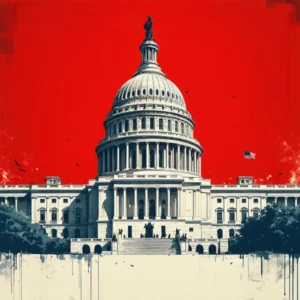
Introduction: A Landmark Decision in Education Funding
On April 4, 2025, the United States Supreme Court delivered a landmark decision that rippled through higher education funding. The Court supported the administration’s move to freeze millions of dollars in grants designated for diversity and educational programs. This ruling challenges long-held perceptions about federal influence over university policies. Moreover, legal experts and educators debate its implications while the nation watches with bated breath. They argue that the decision could not only disrupt established programs but also redefine federal-state relations in education. Additionally, scholars and policy analysts anticipate extensive ramifications as universities adapt to a new funding landscape.
Background and Context of the Grant Freeze
Before the decision, the Department of Education distributed grants that aimed to foster inclusivity and improve access to quality education. In a twist of fate, critics of these programs strongly opposed the grants due to concerns that they interfered with academic freedom. Meanwhile, supporters contended that the grants promoted diversity, equity, and inclusion. Consequently, political divisions intensified both at the state and federal levels. Furthermore, educators noted that changes in funding mechanisms might affect curriculum development and research priorities at several institutions. In light of these events, legal experts meticulously examined the case, and they ultimately brought the matter before the Supreme Court.
The Legal Battle and the Court’s Ruling
Intense litigation before the Supreme Court culminated in a 5-4 ruling that validated the administration’s decision. The legal arguments evolved over months, and various stakeholders worked hard to present compelling evidence. Importantly, the majority opinion stressed the executive branch’s discretionary authority in managing federal funds. Additionally, as one studied the majority’s reasoning, it became clear that arguments about separation of powers held significant weight. In contrast, dissenting opinions raised concerns about federal overreach and the potential erosion of support for programs that many believe contribute to educational excellence. Notably, commentators observed that decisions of this magnitude rarely occur without a strong political and social context.
Implications for Educational Institutions
This decision now forces state and private universities to reimagine their financial planning and program implementation. Several schools immediately began assessing the impact, while university administrators set up emergency meetings. Consequently, acting swiftly ensured that the future of ongoing projects remained as secure as possible. Educators now face challenges because many programs designed to support underrepresented students might lose critical support. Additionally, alternative funding sources must be identified, and universities must rethink policies regarding diversity initiatives. The following bullet list highlights key areas of concern:
- Budget reallocation strategies
- Reassessment of program priorities
- Potential reduction in faculty and support services
- Increased reliance on state, private, and philanthropic funds
Identifying Future Funding Strategies
In response to the ruling, universities actively explore new financing methods. First, administrators aim to secure alternative grants from state and private sources. Secondly, they consider reallocating existing budgets to ensure the continuity of vital programs. Third, leadership teams plan to engage alumni and community partners who understand the importance of diversity initiatives. Moreover, experts encourage the establishment of strategic committees to oversee grant management and resource allocation. Consequently, universities now face the dual challenge of stabilizing their financial base while preserving their commitment to inclusive excellence.
Political Reactions and Broader National Impact
Local and national political leaders express mixed reactions to the decision. Many conservatives applaud the Court’s ruling, claiming it restores proper balance between executive discretion and federal funding. On the other hand, progressive voices decry the decision as a betrayal of long-standing efforts to nurture diversity and equity in educational institutions. Furthermore, several state legislators indicated they might consider legislative measures to counteract the effects of the ruling. The unfolding political drama now includes discussions at numerous public forums, think tanks, and media outlets where pundits debate the merits and demerits of federal involvement in education policy. As a result, observers anticipate future legal reform campaigns aimed at fine-tuning federal oversight of higher education funding. In a dynamic political environment, leaders on both sides of the ideological spectrum are preparing for a protracted debate on resource allocation and academic autonomy.
Responses in the Media and from Academia
Media outlets nationwide report the decision with fervor and nuanced analysis. Reporters, columnists, and legal analysts offer diverse interpretations. Consequently, a few newspapers published op-eds emphasizing the need for educational institutions to remain adaptable. Similarly, academic leaders now arrange conferences and webinars to explore the long-term effects of diminished federal support on research initiatives and campus diversity. Undoubtedly, this ruling ignites vigorous discussions across multiple communities that invest in the future of education. Key observations appear in tables below:
| Aspect | Before the Ruling | After the Ruling |
|---|---|---|
| Funding Source | Federal grants, state funding, private donations | Heightened reliance on state and private sources |
| Program Stability | Steady, federally supported growth | Uncertainty and immediate recalibration |
| Impact on Diversity Initiatives | Strong emphasis on inclusivity and support | Potential scale-back or re-allocation |
Future Perspectives: Navigating New Realities
Universities and their communities now embark on a journey to redefine their engagement with diversity initiatives. Strategic planning committees work diligently to chart new pathways for financial sustainability. They examine every opportunity to partner with community organizations, industry experts, and philanthropic donors. Additionally, academic leaders emphasize revising curricula to integrate broader perspectives that foster inclusion. Moreover, institutions use transitional periods like this to reimagine stakeholder engagement methods, thereby ensuring that the spirit of diversity remains alive despite financial challenges. Educational administrators now demonstrate resilience by adopting iterative planning processes and exploring innovative funding models.
Key Strategies for Long-Term Stability
Leaders across the nation implement several strategies that they believe will secure a robust educational future. Observers summarize these strategies as follows:
- Strengthen collaborations with local community groups and industries
- Enhance investments in research and academic partnerships
- Monitor and adapt policy changes to minimize future disruptions
- Promote public-private partnerships to broaden the funding base
Furthermore, several institutions are actively developing contingency plans that include details for risk management. As a result, universities expect to emerge from these challenges with renewed vigor, creative reorganization, and improved accountability standards.
Reflections on Governance and Administrative Power
In the corridors of power, debates intensify regarding the proper balance between federal authority and educational autonomy. Politicians, legal scholars, and community leaders all present compelling narratives for the direction of future policy. Throughout debates in Congress and state legislatures, leaders display a mix of cautious optimism and trepidation. They stress that, despite the legal victory, the long-term consequences might shape educational outcomes nationwide. Additionally, the administration capitalizes on the decision to bolster its agenda of reducing federal bureaucratic intervention in academic affairs. Consequently, this contentious moment serves not only as a turning point for educational grants but also as a symbol of shifting power dynamics in American public policy.
Impact on Future Legal Discussions
As discussions unfold in legal circles, many experts predict that this ruling will trigger further legal challenges and reinterpretations of federal power. Legal briefs compiled after the decision offer a wealth of insights that scholars continue to debate. Consequently, analysts predict that several court cases, centered on the limits of federal funding in education, will soon surface. Additionally, law schools integrate these discussions into their curricula to prepare future legal professionals. Overall, the narrative emerging from the Supreme Court ruling fosters an environment ripe for judicial and legislative examination. In time, updated legal interpretations could reshape how governments and educational institutions collaborate.
Conclusion: A Pivotal Moment for Change
The Supreme Court’s decision stands as a pivotal moment provoking scrutiny, debate, and innovation. Each stakeholder now possesses the responsibility to adapt, reimagine, and strengthen the base of educational funding. Although the decision polarizes opinions, it also inspires new approaches to ensure that diversity and inclusion continue to thrive in higher education. Universities, legislators, and community leaders vigorously discuss potential avenues for sustainable support. In addition, the decision underlines the importance of responsive governance that prioritizes educational excellence. Clearly, as history evolves, this ruling will become a cornerstone for debates on federal support and academic independence.
Throughout this unfolding chapter in U.S. education, stakeholders remain determined and proactive. They prepare to navigate increasingly complex political terrains while steadfastly upholding principles of equity and academic freedom. Ultimately, the case reminds every observer of the delicate balance between immediate administrative actions and long-term societal impacts. These lessons now guide future reforms, ensuring that the spirit of dedication to education persists despite regulatory and fiscal challenges.




